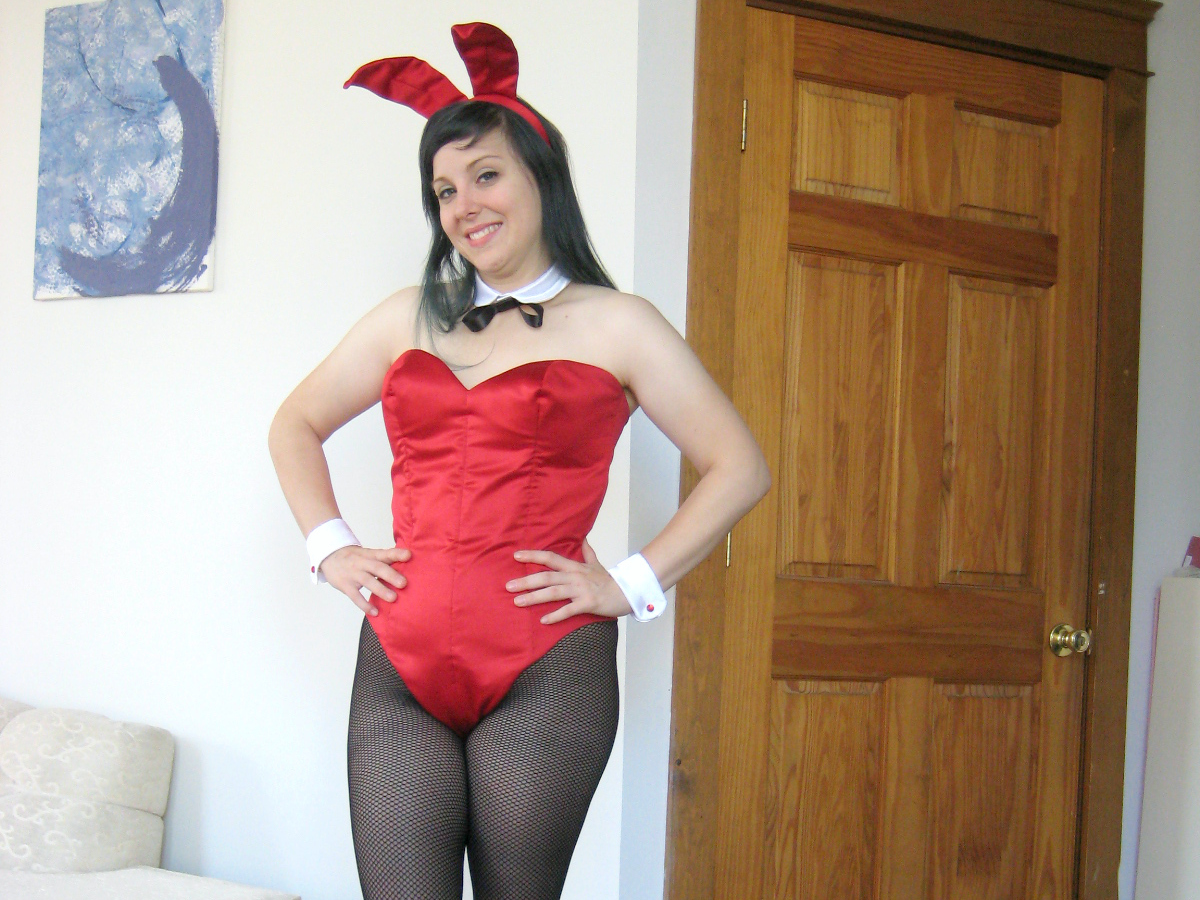Alterations: Once your pattern pieces are prepared, cut out a sample fit from a cheap fabric (not your fashion fabric). Sew the princess seams, side seam, and seam between your legs. Keep the back open where the zipper will be so you can get into the garment. Try it on and have someone pin you into the bunny suit. Using a marking device (chalk, pencil, pen, etc.), make any adjustments. I re-drew the leg line and at this point I figured out a big mistake that I made on my original pattern.
How to transfer test fit alterations to your paper pattern:
Place a couple of cork squares on your work surface. Lay the pattern piece that needs to be changed on top of the cork, then align the fabric on top of the pattern piece using a couple of pins to secure fabric. Place pins through the fabric of your test fit, through the paper pattern, and into the cork square along the adjustment line you drew on your test fit. This will leave a row of dots in your paper pattern so you know where that line should fall.
Remove the pins and test fit. Trace the line of dots with your pencil to indicate your new stitching line.
Place the next pattern piece that needs alterations on the cork, align the fabric, create a row of pin holes for your new sewing line, trace the line.
Transfer the marks to all pattern pieces that require alterations. Use a hip curve or flexible ruler to create a smooth finished line.
IMPORTANT: Transfer the alteration marks from both sides of your test fit, i.e., transfer the alteration marks from your Center Front Right and Center Front Left pieces of your test fit to the Center Front Pattern piece. This will create two lines of pin-holes. Split the difference between these lines when you determine what the final new sewing line will be. I made my alteration marks on my original bunny suit block and then transferred the new lines to the individual pattern pieces. Once you are happy with the fit, the pattern is ready to cut from fashion fabric.



